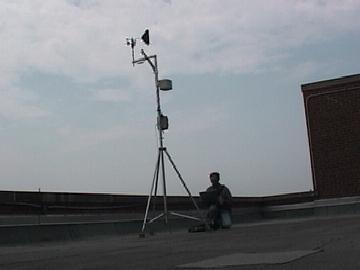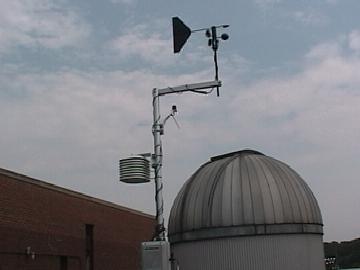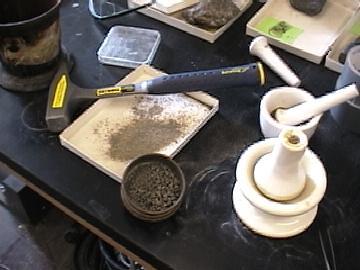19 July, 2002
Research Technology
One of the most interesting aspects of research is the technology associated with it. Often, people are under the impression that scientists use only the most advanced tools available today. Sometimes, that is the case, but often, relatively simple tools that can be found just about anywhere are the best solution to a problem
In the research I've been conducting this summer, I have been introduced to some technologies which are new to me, and some that are very familiar. I am used to using my computer frequently, but only recently have I learned to use it with the operation of a weather station and data logger. The weather station itself contains many tools that are familiar to anyone who studies weather; thermometer, relative humidity sensor, barometric pressure, wind speed and direction, etc. This one also contains a light sensor that measures how much sunlight is reaching a specific point. What makes this weather station unique is that all of the sensors are hooked up to a data logger. The logger is really just a computer chip housed in a weatherproof box that takes readings at specific intervals. When I'm ready to examine the data, I simply connect my computer to the logger, and download the files. From there, I can graph the results and interpret the data that supports my research.
A similar, but smaller and simpler device is the datalogger hooked up to a rock. This logger has a temperature probe coming out of it and inserted into the rock. Several of these will be deployed in Antarctica in order to show us the conditions under which these rocks weather. We will be placing them in several environments to get a variety of results.
Some of the tools I've used are common in many machine shops. I've used the rock saw extensively to cut several samples, and the drill press to drill holes in each of the rocks. The simplest tool I've used is the rock hammer and mortar and pestle, to crush rock into a fine powder that, when mixed with epoxy, will fill in the holes around the probes.
While some of the tools I've used this summer and will use this winter in Antarctica use cutting edge technology, much of what is used in research is available at any hardware store.

Andy checking weatherstation.

Weatherstation

Datalogger and rock with temperature probe.

Crushing rocks

Rock saw.

Drill press.
Contact the TEA in the field at
.
If you cannot connect through your browser, copy the
TEA's e-mail address in the "To:" line of
your favorite e-mail package.
|
